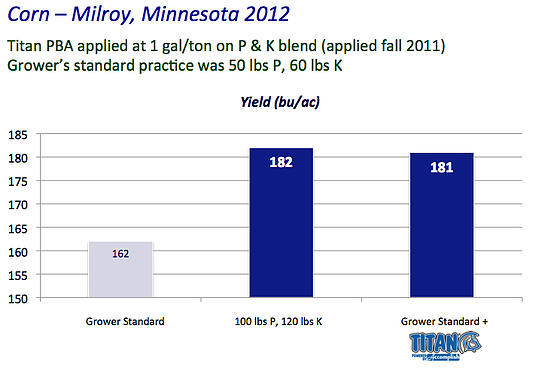By John Wolf, Director of Commercial Development, Agricen
Across most of the corn production area, 2014 has the potential be a banner year for yield. Given that higher average yields increase supply, economics dictate that prices will be somewhat lower without an accompanying increase in demand. This poses a dilemma for growers as they plan for next year’s crop.
With many growers producing more corn than usual (and probably more than they fertilized for), overall soil nutrient levels are likely to drop as nutrient removal rates surpass what was applied ahead of the crop. Faced with commodity price pressures, growers are unlikely to increase their traditional dry fertilizer rates, even though they will probably need more nutrition to overcome high nutrient removal rates from this year’s excellent yields. This means there is a great risk that growers won’t supply next year’s crops with enough nutrients.
The best choice for growers is to apply the appropriate fertilizer rate to maintain adequate soil nutrition levels as indicated by a soil test. For growers who simply don’t want to bear the added cost of increased fertilizer rates, increasing the first-year recovery rates of the fertilizers they do apply may be a cost-effective alternative.
First-year recovery rates for applied dry N,P & K are generally accepted to be:
• N +/-50%
• P +/- 25%
• K +/- 50%
By including a cost-effective biochemical product like Titan PBA—which increases the rate at which applied dry nutrients are converted to inorganic forms (N&P) that can be utilized by growing crops—growers can improve their first-year nutrient recovery rates and ensure that next year’s crop has the potential for another banner harvest.

This corn trial from Minnesota is a good example of the benefits Titan PBA can bring to growers when applied in the fall along with dry fertilizer.





